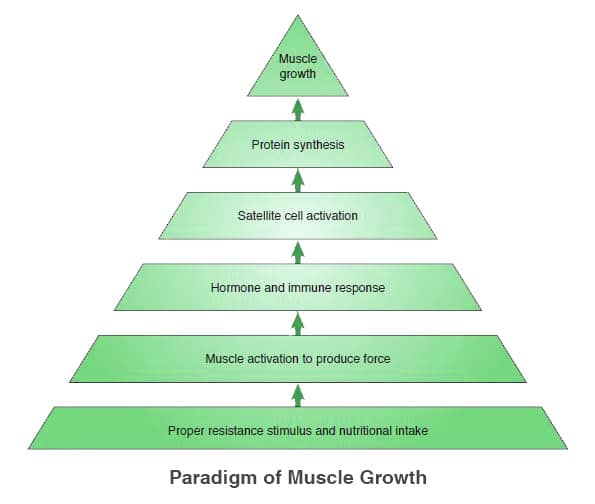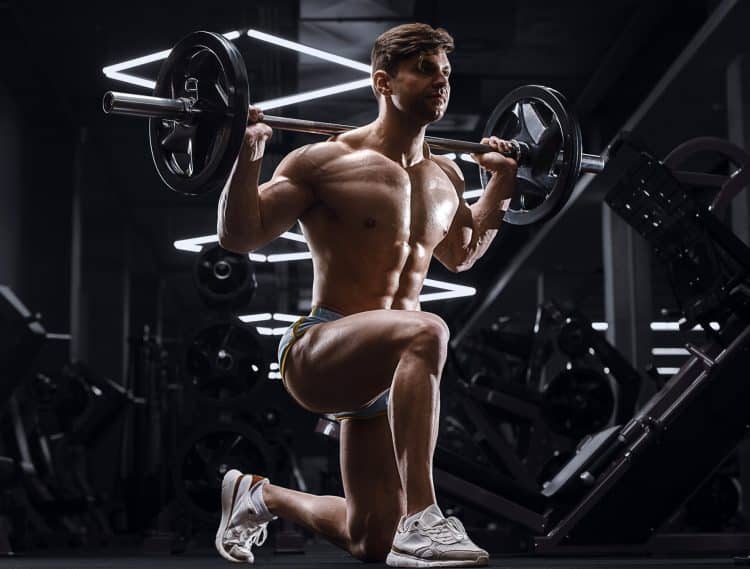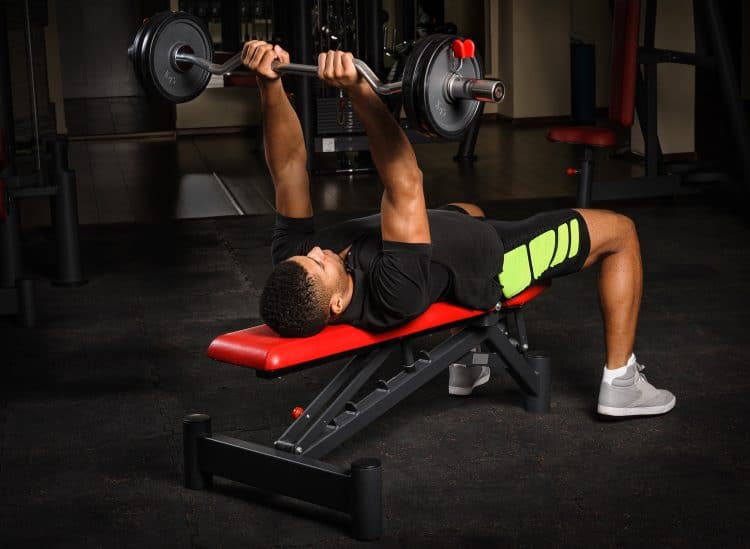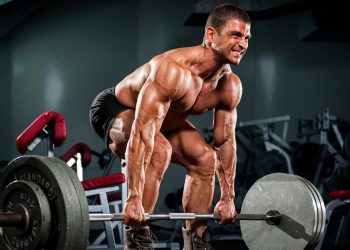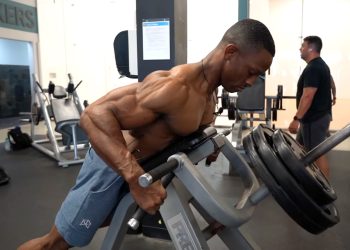If you lift weights, you are probably interested in building bigger muscles. Bodybuilding is the most obvious example of this pursuit, but recreational lifters also train to increase muscle size, albeit more modestly.
Of course, some lifters train for increased strength and performance, such as athletes, powerlifters, and Olympic weightlifters. For them, muscle growth is merely a side-effect of getting stronger, but they get bigger all the same.
But how do muscles grow? And what do you need to do to ensure your muscles continue to get bigger?
In this article, we look at the two mechanisms responsible for muscle growth, hypertrophy and hyperplasia, one of which is tried and tested, while the other is more controversial.
What Makes Muscles Grow?
Before we delve into how muscles get bigger, let’s take a moment to discuss how training triggers muscle growth. After all, if you want to build bigger muscles, it makes sense to ensure your workouts are as productive as possible, right?
Firstly, it’s important to understand that your body perceives your workouts as a form of stress. Your body responds to this stress by improving its ability to cope with future bouts of the same demands.
Level Up Your Fitness: Join our 💪 strong community in Fitness Volt Newsletter. Get daily inspiration, expert-backed workouts, nutrition tips, the latest in strength sports, and the support you need to reach your goals. Subscribe for free!
The three main effects of training are (1):
Muscle tension
Lifting heavy weights puts a lot of tension through your muscles. Imagine hanging a massive load from a rope; the greater the weight, the more strain on the rope. This tension stresses the muscle fibers, and they respond by getting bigger and stronger.

Because of this, we know that lifting weights approaching your one repetition maximum is one of the most effective ways to build bigger muscles, and why low rep, heavy weight training works so well. Heavy weights also build strength.
However, it’s worth noting that training to failure with light weights also results in muscle tension, albeit toward the end of your set, when you have to work extra hard to crank out the last couple of reps.
Because of this, anywhere from 5 to 35 reps can result in muscle growth, provided you get your set to within a rep or two of failure. Easy workouts won’t get the job done, a they won’t create sufficient muscle tension.
Metabolic stress
Strength training is primarily an anaerobic activity. That means the muscles produce energy without oxygen and use glycogen in an oxygen-free environment. As your muscles fatigue, they produce metabolic byproducts, such as lactate, adenosine diphosphate, and hydrogen. Accumulation of these byproducts is what eventually forces you to end your set.
These metabolites trigger a cascade of anabolic hormones, including testosterone, growth hormone, and IGF-1, which result in increases in muscle size.
Metabolic stress is another reason why high-rep, low-weight sets also result in muscle growth. You can also increase metabolic stress by using short rests between sets, e.g., 60-90 seconds.
How do you know you are creating metabolic stress? You’ll feel your muscles burning, and your set will come to an end even if you want to do more reps. You’ll also get a great pump.
Muscle damage
Intense exercise causes damage to muscle fibers. This is often called microtrauma. In response to this damage, your muscles not only repair the damage, but they also overcompensate and get bigger. This is called supercompensation.
Your body uses satellite cells to repair the damage like a builder uses bricks to fix a broken wall. Satellite cells are unformed cells, not unlike stem cells. They respond and adapt to biological signals and turn into whatever your body needs.
Muscle damage occurs when you train close to failure and is commonly associated with eccentric training, which is where your muscles generate force as they lengthen. Muscle damage also tends to result in delayed onset muscle soreness or DOMS for short.
However, DOMS tends to diminish over time, which is due to something called the repeated bout effect. In simple terms, your muscles develop a sort of immunity to the inflammatory effects of training, so you experience less soreness as time passes.
Of course, to build and maintain bigger muscles, you must train consistently and progressively. That means working a little harder week by week by increasing your training weights or doing more reps.
It takes years of consistent training to maximize muscle size, and sadly, there are no shortcuts. However, you’ll soon start to lose muscle size if you take a prolonged break from training.
Learn more about developing a consistent exercise habit here.
Summary
So, to optimize your muscle-building training, you need to:
- Work out consistently and for a long time – years, not just weeks or months.
- Lift heavy weights or train to failure to create muscle tension.
- Do enough reps to generate plenty of metabolic stress.
- Cause microtrauma by training to failure and emphasizing the eccentric portion of all your reps.
The good news is that you can easily combine these effects within a single workout, and most bodybuilding and strength training programs are designed to produce all three.
Hypertrophy vs. Hyperplasia
There are two mechanisms of muscle growth: hypertrophy and hyperplasia. While both contribute to muscle size, there are critical differences between them.
Hypertrophy
Hypertrophy is the most widely accepted mechanism of muscle growth. It’s best defined as an increase in the size of the component muscle cells. Hypertrophy occurs in response to a training stimulus, i.e., muscle tension, metabolic stress, and muscle damage.
There are two types of hypertrophy: myofibril and sarcoplasmic.
Level Up Your Fitness: Join our 💪 strong community in Fitness Volt Newsletter. Get daily inspiration, expert-backed workouts, nutrition tips, the latest in strength sports, and the support you need to reach your goals. Subscribe for free!
Myofibril hypertrophy is where the muscle fibers get bigger. This is also known as functional hypertrophy because those bigger muscle fibers are also usually stronger. Increases in myofibril hypertrophy are often associated with heavy strength training.
In contrast, sarcoplasmic hypertrophy is usually linked to high-volume workouts. It is the accumulation of non-contractile fluids in and around the muscle cells. This is sometimes known as non-functional hypertrophy because there is no significant increase in strength.
To build the biggest muscles possible, you should train for myofibril and sarcoplasmic hypertrophy. This is best done by using heavy, medium, and lighter loads in training.
For example:
- Squats – 5 sets of 5 reps (heavy weight – myofibril hypertrophy)
- Leg press – 3 sets of 10-12 reps (medium weight – myofibril and sarcoplasmic hypertrophy)
- Walking lunges – 3 sets of 15-20 reps (light weight – sarcoplasmic hypertrophy)
Such a hybrid training method should ensure you fatigue all available muscle fibers and stimulate all three pathways for muscle growth.
Hyperplasia
Hyperplasia is best defined as an increase in the number of muscle cells. There are two ways that hyperplasia can occur; either new muscle fibers develop from satellite cells or muscle fibers split into two smaller muscle fibers, which then undergo hypertrophy.
For a long time, hyperplasia was NOT associated with strength training. Instead, hyperplasia was thought to happen simply whenever your body needed to create more cells in general.
For example, suppose a donor gives up a lobe of their liver for transplant. In that case, the remaining liver tissue will regenerate and grow back within a few months, which is hyperplasia in action.
However, some studies have demonstrated that skeletal muscle hyperplasia can occur due to training, although studies are small and scarce (2). That’s because counting muscle cells is far from easy and involves painful muscle biopsies before and after a prolonged training period. Needless to say, volunteers are NOT lining up to take part in such studies!
That said, it’s becoming increasingly accepted that elite bodybuilders exhibit hyperplasia, although whether this is a genetic trait or a result of their workouts or steroid use is as yet unclear.
Given the incredible muscularity of top bodybuilders, it’s reasonable to think that their size is the result of bigger muscle fibers AND having built more muscle cells.
Hyperplasia is most commonly associated with long-term training and loading muscles in a stretched position. In fact, most early hyperplasia studies were conducted using weighted stretches in the wings of birds (3).
Training for Hyperplasia
So, can you train for hyperplasia? At the moment, the answer is unclear. After all, it seems that hyperplasia and hypertrophy both occur in response to bodybuilding-style workouts.
However, it’s hypothesized that weighted stretches may be superior for trigger hyperplasia. This makes a certain amount of sense, given that the avian studies that identified hyperplasia used weighted stretches.
So, how can you use this information?
Firstly, train using a full range of motion and add brief pauses when your muscles are stretched, i.e., at the bottom of a deep squat or dumbbell fly or the start/end of a lat pulldown or chin-up.
Don’t relax in this position, as that could cause injury. Instead, flex the target muscle as hard as possible in a lengthened position.
Next, you could try weighted stretches. These are best done as finishers after your main workout. To do a weighted stretch, simply hold the weight for 30-60 seconds with your muscles in a lengthened position.
Again, do not relax, as you could injure a joint, muscle, or tendon. As an added benefit, this is an effective way to increase functional flexibility and end-of-range strength.
Examples include:
- Bottom position of the Romanian deadlift (hamstrings)
- Bottom position of a dumbbell fly (pecs)
- Start/end of a lat pulldown (lats)
- Bottom position of a sissy squat (quads)
- Bottom position of a preacher curl (biceps)
- Bottom position of a French press (triceps)
Read: What is Muscle Maturity and How to Achieve It?
Hypertrophy vs. Hyperplasia – Closing Thoughts
The most accepted mechanism for muscle growth is hypertrophy, which is an increase in muscle fiber size. However, some evidence suggests that muscle cells may also increase in number, which is called hyperplasia.
Maximizing hypertrophy AND hyperplasia is the best way to develop your muscles to their full potential.
Both processes occur due to intense and regular strength training. However, it is not thought to be possible to trigger one or the other independently.
That said, exercises that involve a large range of motion and place muscles under a lot of tension in a stretched position may enhance hyperplasia. Weighted stretches may be helpful, too.
But, the REAL key to muscle growth is consistent, progressive training. That means you need to commit to working out not just for a week or a month but for many years.
References:
1– PubMed: The Mechanisms of Muscle Hypertrophy and Their Application to Resistance Training https://journals.lww.com
2– PubMed: Evidence of Fiber Hyperplasia in Human Skeletal Muscles from Healthy Young Men? A Left-Right Comparison of The Fiber Number in Whole Anterior Tibialis Muscles https://pubmed.ncbi.nlm.nih.gov/1874233/
3– PubMed: Role of Muscle Fiber Hypertrophy and Hyperplasia In Intermittently Stretched Avian Muscle https://pubmed.ncbi.nlm.nih.gov/8514707/

